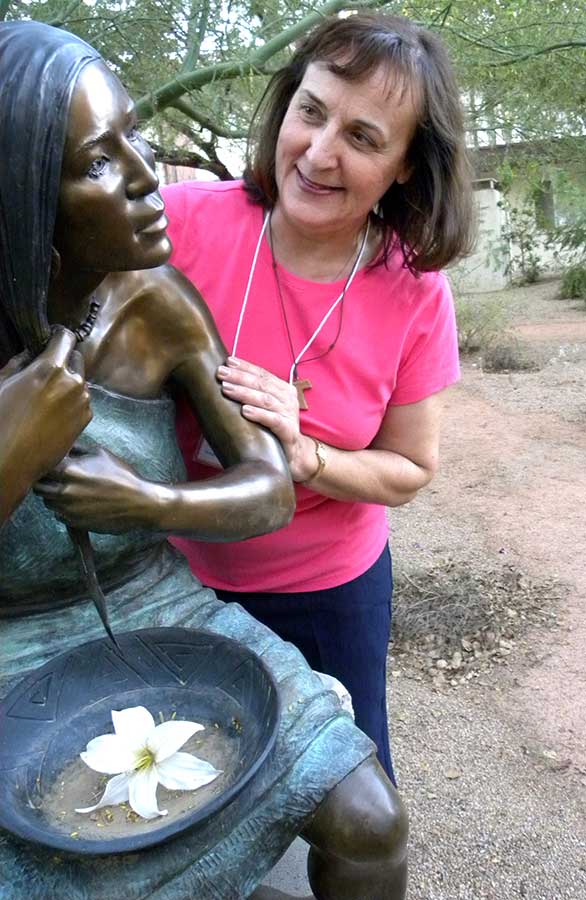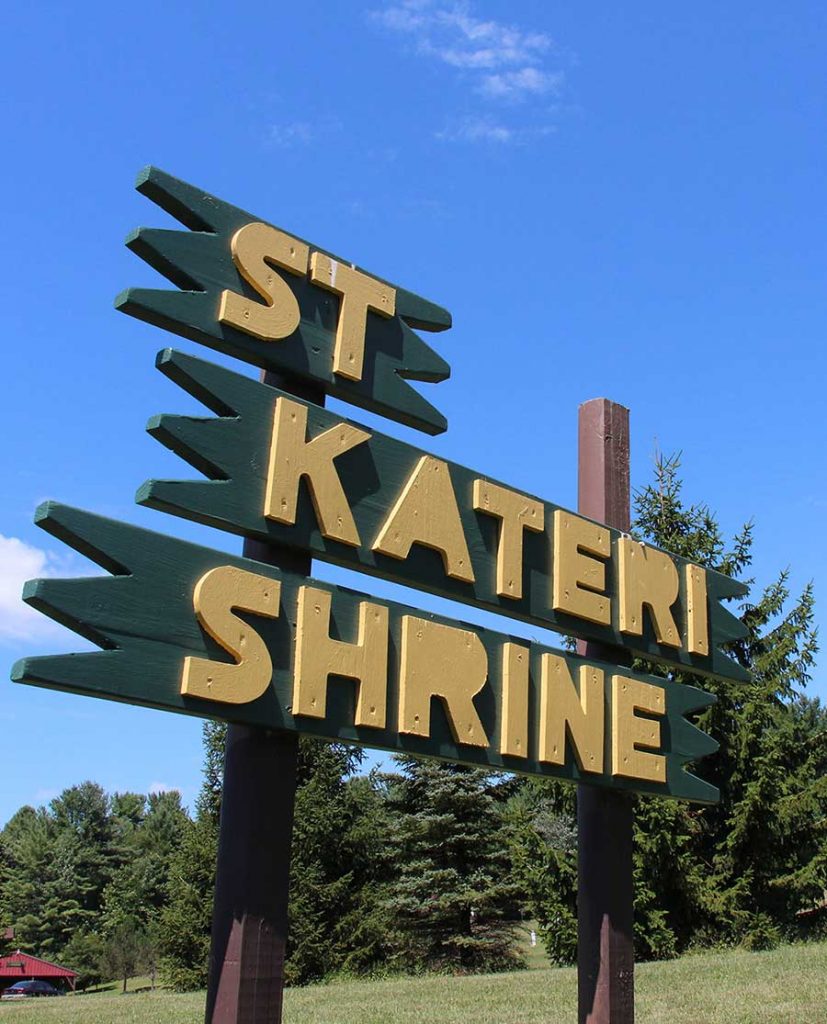This glimpse of the Region’s namesake, Kateri Tekakwitha, is from a presentation given at St. Joseph-St. Patrick Church, Utica, in 2012 by Beth Lynch, then-museum manager at the Shrine of Our Lady of Martyrs at Auriesville, NY (also known as the Shrine of North American Martyrs and birthplace of St. Kateri Tekakwitha).
“It all started with the Franciscans,” according to Beth Lynch, former museum manager at the Shrine of North American Martyrs at Auriesville.
The friars came to the adventurous wilderness of North America in the 17th century and were overwhelmed at the immense task of evangelizing the New World. So they invited the Jesuits, whom the Mohawks would call the “black robes” and then martyr at the present-day Shrine at Auriesville.
“Since the Mohawks were the first to shed the blood of the missionaries,” Beth Lynch quoted one author, “…so they were the first to share the fruits of the faith.”
Some ten years after St. Isaac Jogues and companions were martyred, Kateri was born at Auriesville. Her Algonquin mother was already a Christian and her father, a Mohawk chief, was a non-believer. So Kateri was born to conflict on more than one level — the conflict of faith with her parents and the conflict of on-going savage encounters with Europeans and other tribes.
Even so, her happy parents named her Sunshine. It wasn’t until a few years later — after smallpox killed her parents and left her scarred and partially blind, and after her uncle-turned-chief adopted her — that the Mohawks started calling her Tekakwitha, or one who gropes about and bumps into things.
When she was 10, French soldiers and hostile natives from Canada destroyed Mohawk strongholds on the south bank of the Mohawk River, including her village. So they moved across the river to the present-day Fonda area — on the site of the Franciscan-run National Kateri Shrine. The Iroquois then agreed to allow the “black robes” to come among them.
Despite being intimidated by other Mohawks, Kateri grew in faith. “She was so drawn to her mother’s Christian faith,” and to other Christian Mohawks, Beth said.
She spent a lot of time by herself, Beth noted, and developed a sense of prayer and communion with the Great Spirit. The missionaries “saw right away” something special in Kateri. The Jesuits were now teaching her the Catholic faith. One wrote: “She learned more in a week than others learned in several years.”
Beth added: “The most menial task was exalted by her…That’s the key, right there.” Like Mother Teresa, she was “doing the most ordinary tasks with extraordinary love.”
Kateri’s mysticism was developing. She decided to remain a virgin. She pondered the mystery of the sacraments. “She sensed there was something so big. She wanted it.”
The missionaries described her prayer as contemplative. “She prayed with her heart,” Beth said.
She was finally baptized at age 20 on Easter in 1676. Then, fearing for her safety, the missionaries eventually arranged to have her flee to a village of Christian natives in Canada.
She offered up her pain and suffering for the good of the community as her health deteriorated. She spent time in prayer and performing acts of charity. In fact, Beth noted, Kateri “gathered a group of women about her and encouraged them to do acts of charity anonymously.”
By the time she was on her deathbed (at a young 24), everyone in the village knew she was holy, Beth said. Upon her death, it was recorded that she whispered the names of Jesus and Mary, her smallpox scars miraculously disappeared, and healings of others occurred.
What does Kateri’s life mean today?
Her fervent desire drew her even closer to God, Beth said. “You really have to want it.”
Pointing to Kateri’s ordinariness, she suggested God was using that “to make all of us holy.”
***
Kateri was canonized a saint of the Roman Catholic Church on Oct. 21, 2012, along with another saint from upstate New York – Mother Marianne Cope, OSF, who grew up in Utica in the mid-1800s, became a Franciscan sister and went on to serve the lepers of Molokai in Hawaii.


